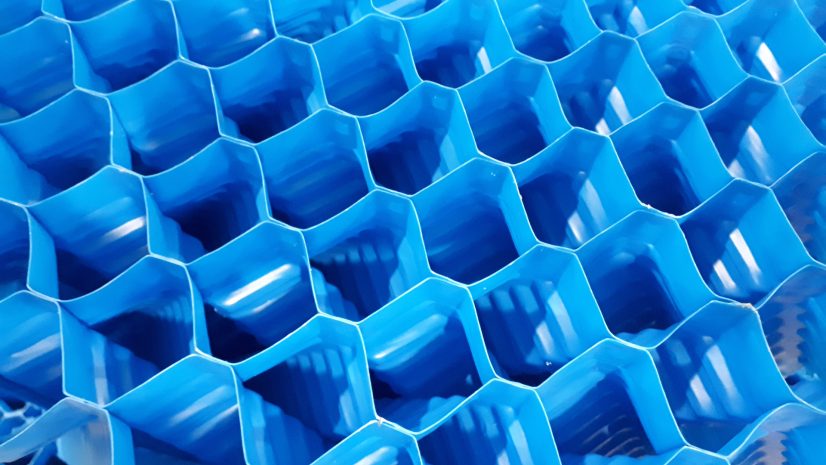Cooling Towers: Components and Materials

1. Cooling towers: components
Let us see the main parts you can find both in open-circuit and closed-circuit cooling towers.
2. Structure
Casing and support structure can be made of metal, GRP (glass fibre reinforced polyester) or both. In case of large, field-erected or hyperbolic-type cooling tower concrete can be used too.
3. Fill pack and heat exchange coils
In the open-circuit cooling tower you find the fill pack. In the closed-circuit ones, you find the heat exchange coils with the same functionality.
They are the “heart” of cooling towers, where the heat exchange between water and air occurs.
In case of closed-circuit cooling towers, the heat exchange coil consists of a closed tube bundle through which the process fluid or water circulates. This last remains clean during the cooling process because it is not in contact with air.
In case of open-circuit cooling towers the water is in direct contact with air and therefore can be contaminated during the process. Depending on water quality the most suitable type of fill pack has to be considered. A wide range of fill packs can be adopted: from “film” fill packs to “splash” fill packs.
Tell Us Your Needs4. Water distribution system
Water distribution system is usually made of PVC pipes and nozzles or through open channels. These two systems allow the water distribution over the heat exchange surface.
5. Drift eliminator
Drift eliminator is located immediately over the water distribution system. It has the function of keeping micro-drops of water that would, otherwise, be carried out by the air flow caused by the fan.
6. Fan
Axial or centrifugal fan. It’s the only moving mechanical part that “forces” the necessary water evaporation for cooling. The choice of axial or centrifugal type depends on design and layout conditions. It will determine the best operation and the lowest system resourse consumption.
7. Cooling towers: materials
The quality of the water to be cooled significantly affects both the choice of constructive materials and fill pack material. In case of particularly aggressive or acid water, non-corroding and long-lasting material, as stainless-steel or fibreglass, are preferred.
Contact Us and Find All MITA TechnologiesResources
Best practices
Read all Pieces of Advice by MITA Cooling TechnologiesWhat to Know
Find Out All Technical TermsTechnical Articles
Read All our Technical ArticlesNewsletter
Subscribe to MITA newsletter and stay updated on technical solutions for industrial and civil cooling and get to know our offer.